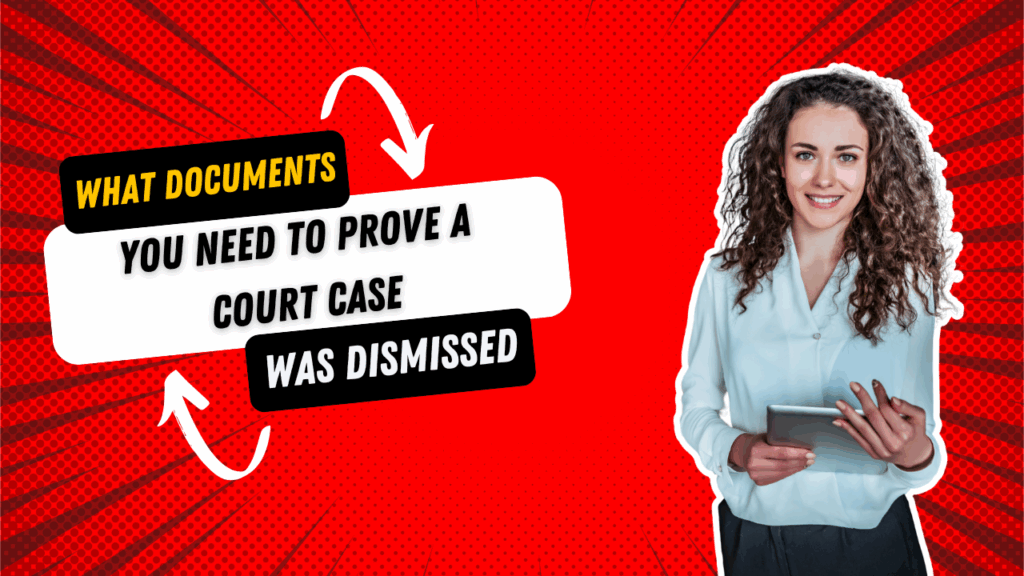“Use short sentences and common language written at a 9th grade reading level.” If your case was dismissed, you don’t need a fancy legal team to clear your name online. You just need the right documents and a solid plan.
Dig Deeper: How to Remove Court Records from Google Search
Why Proof of Dismissal Matters
A dropped or dismissed case still shows in public records. It can pop up in background checks, Google searches, or tenant screening reports. Admissions offices, landlords, and employers usually don’t dig deeper. They see the case and move on.
People search online before big decisions. According to Pew Research, 70% of people admit to Googling names before hiring. If you can’t prove that your case was dismissed, it could strike again and again.
Key Documents You’ll Need
1. Docket Sheet or Court Record
This is the official listing of each step in your case. It shows that the charges were dropped or dismissed. It’s usually available for free at the courthouse website or clerk’s office.
2. Dismissal Order
This is the judge’s written decision dismissing the case. It includes court name, date, case number, and reason for dismissal. This is often the most clear proof.
3. Order of Nolle Prosequi (If Applicable)
In some states, prosecutors file this to show they won’t pursue the case. It counts as a dismissal too.
4. Certificate of Disposition
Some courts issue this when a case ends. It’s a summary that shows final status. It’s sometimes called a “case closed certificate.”
5. Proof of No Conviction
If the judge ordered no conviction entered, the court may issue a certificate noting that. This is important for websites that track punishments.
6. Court Transcripts (Rarely Needed)
This part is optional. It shows what happened in court. It can help if there are disputes. Usually not required for most record removal requests.
Where to Get These Documents
Courthouse or Clerk Office
Visit the clerk’s office for a certified copy. Some courts charge $5–$15 per page. If the clerk doesn’t have it handy, ask for a request form.
Online Court Portal
Most states have searchable portals that include docket sheets and orders. You may need to pay a small fee to download certified documents.
Court Records Request Service
If you live far from the courthouse, third-party services can file requests for you—for a fee. These typically cost $20–$50, plus government fees.
How to Use the Documents
For Website Removal Requests
Include a copy or screenshot of the dismissal order and docket sheet. Clearly label the case number.
Example message for a removal form:
“My case (No. 12345) was dismissed on March 4, 2022. I’ve attached the dismissal order. Please remove this outdated record.”
For Background Check Disputes
Submit paperwork and a copy of any report showing the case. The company must respond within 30 days under FCRA rules.
For Court Record Sealing or Expungement
Attach the dismissal order to your sealing petition. It proves eligibility and speeds up approval.
For Google Removal Requests
If the information is outdated or misleading, file a request and attach the dismissal evidence. Google will review it.
How to Organize Your Documents
- Create a clear folder labeled “Dismissed Case
- Include docket sheet
- Include dismissal order (certified copy)
- Add certificate of disposition if available
- Add proof of no conviction (if issued)
- Keep scans of all paperwork in PDF format
- Keep original copies somewhere safe
This folders helps present your case to others quickly and professionally.
How Long the Process Takes
- Docket sheet download: minutes to hours
- Certified dismissal order: 1–5 days after request
- Website removal: some respond in 48 hours, others may take weeks
- Background check dispute: up to 30 days
- Sealing petition: varies wildly by jurisdiction, usually 4–12 weeks
Start early if you have upcoming deadlines like job applications or visa interviews.
Troubleshooting Common Issues
“Site Says No Legal Proof”
Ask what they need. Some want a case status letter from the court. Offer to supply more details.
“They Want Money”
If the case was dismissed, you shouldn’t pay for removal. Politely say that the record is outdated and public policy supports their removal.
“Background Check Firm Denies Request”
File a dispute with the consumer protection agency. Gather your proof and escalate.
“Court Sealing Needed First”
Some sites only act on sealed or expunged records. Include your petition and proof of filing.
Final Tips
- Start with the courthouse. That’s the source of truth.
- Copy everything once, use it for all requests.
- Present your information clearly to avoid back-and-forth.
- Use follow-up emails and screenshots as proof.
- If in doubt, consult a legal aid office or hire a reputation service like Top Shelf Reputation.
You don’t have to face this alone. With the right paperwork and a clear game plan, you can show the world that your record doesn’t define you anymore.
Need help? Top Shelf Reputation specializes in managing court records online, even when they can’t be fully removed. Contact us today to take back control of your online image.

